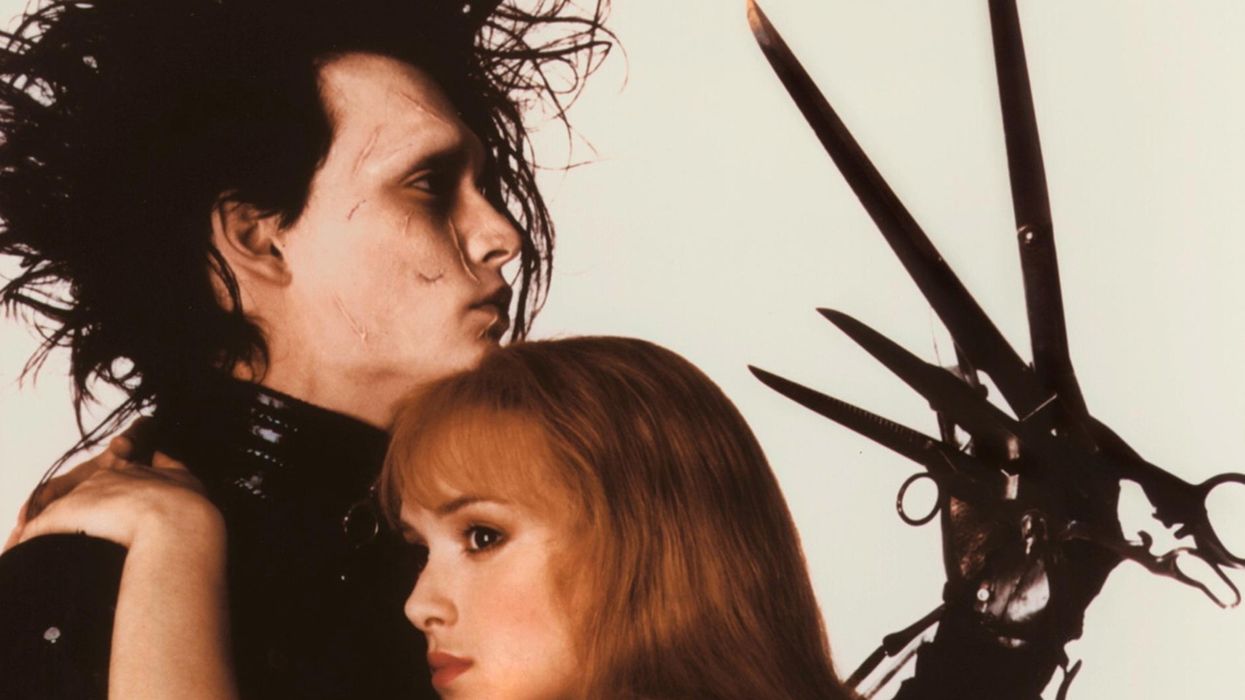If you watch films like Beetlejuice, Edward Scissorhands, or Corpse Bride, it's quite clear that they were all directed by the same comically macabre individual, Tim Burton. Experiencing his brand of cinema is a lot like walking into an abandoned amusement park, or a haunted carnival, or a nightmarish circus—it's entertaining—and even endearing at times, but it's also extremely dark and deeply disturbing. His style is so unique that he has joined the ranks of filmmakers whose names have made the transition from moniker to adjective, like Stanley Kubrick, David Lynch, and Alfred Hitchcock. In this video essay, Fandor's Philip Brubaker defines exactly what "Burtonesque" is, from the concept of the "heroic loner" to his surrealistic humor.
Burton's body of work has gone through several changes throughout his career, but the "esque" of his style really comes from his earlier work from the late 80s to the mid-late 90s. Films like Beetlejuice, Edward Scissorhands, and his two contributions to the Batman franchise contain a number of his narrative tropes, as well as his iconic gothic/idyllic imagery.
In terms of the narrative, Burton's films, at least from this time, tend to feature a protagonist that Brubaker calls the "heroic loner", which is quite a departure from the traditional underdog hero that was (and still is) popular in films in that Burton's heroes aren't lowly nerds that desire companionship or acceptance from others in their community. His heroes are lowly nerds/goths/super crime fighters that are 100% happy with their lonely existence secluded from others. In Brubaker's own words:
Burton’s heroic characters are troubled loners, isolated from the rest of the world. But some of them like it that way. Batman is a recluse, as is Edward Scissorhands. Pee-wee Herman is a happy loner.

In terms of cinematic style, Burton's films are—interesting. They're dark, demented, and nightmarish, but they also have a strange innocence and element of childlike wonder, too. He creates a dichotomy between the gothic and idyllic—the dark and the light—but since it's Burton, the darks and lights are warped by the funhouse mirror of his creativity. In Beetlejuice, the dichotomy is between down home (and recently deceased) couple Adam and Barbara and the pretentious big city Deetz family. In Edward Scissorhands, it's between artificial leather-clad man with scissors for hands Edward and a (seemingly) artificial bubblegum pop suburban town.
As time went on, though, Burton's style changed—it became less edgy, less dark, less gothic. Even when he did make a return to form, like with Dark Shadows and Alice in Wonderland, it almost felt like Tim Burton was trying to make a "Tim Burton film", but wasn't quite getting it right. However, films like Big Eyes, Big Fish, and the newly released Miss Peregrine's Home for Peculiar Children, which are much more commercial and deviate greatly from his early work, do contain bits and pieces of that "Burtonesque" style that made his films so iconic.

Source: Keyframe












